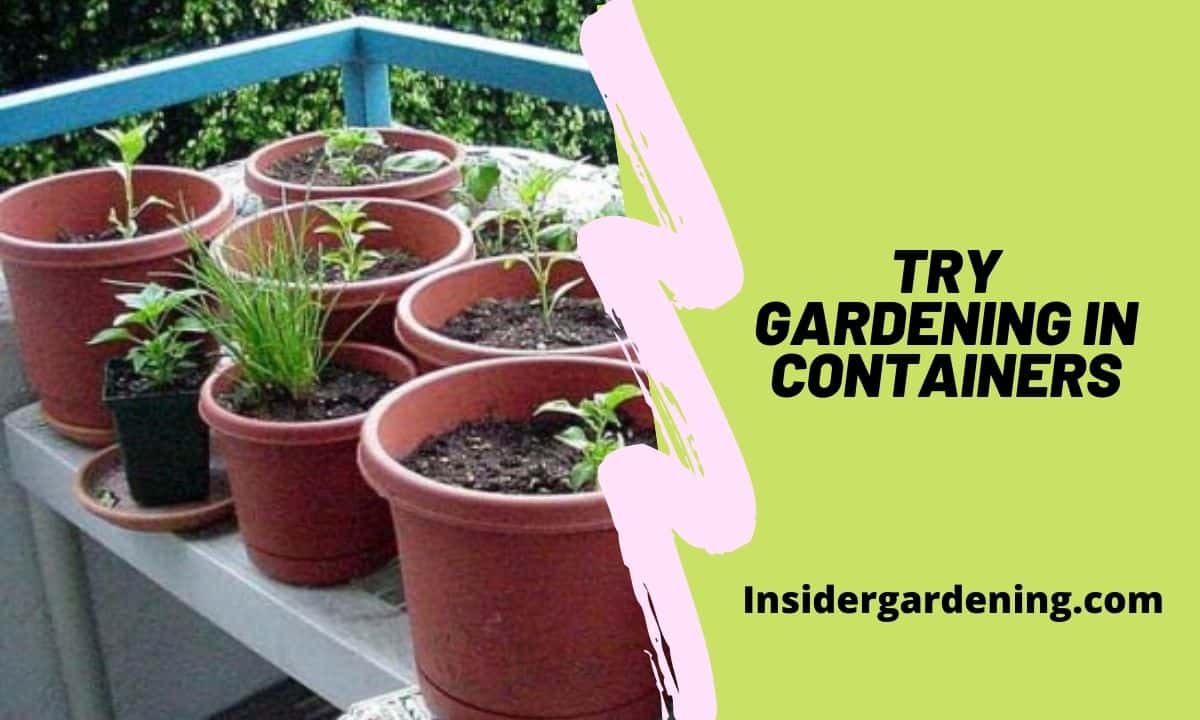Try Gardening in Containers: Bringing the Joy of Gardening to Small Spaces

Gardening is a fulfilling and rewarding hobby that allows us to connect with nature and enjoy the beauty of plants. However, limited outdoor space should not deter you from pursuing your green thumb dreams. Container gardening offers a fantastic solution, enabling you to grow a variety of plants in even the smallest of spaces. In this article, we will explore the joys of gardening in containers, providing tips, plant suggestions, and guidance to help you embark on your container gardening journey.
Benefits of Container Gardening
Container gardening offers numerous benefits, making it an ideal choice for small spaces or urban environments. Here are a few advantages:
- Flexibility: Containers provide the flexibility to garden anywhere, whether it’s a balcony, rooftop, patio, or even indoors. You can move the containers around to optimize sunlight or create an ever-changing garden display.
- Space Optimization: Container gardening maximizes space utilization. Even a small balcony or windowsill can accommodate a variety of containers, allowing you to grow different plants simultaneously.
- Pest and Weed Control: Container gardening helps minimize pest infestations and weed growth. Elevated containers are less susceptible to ground-dwelling pests, and using sterile potting soil reduces the risk of weed seeds.
- Accessibility: Container gardens are easily accessible, making it convenient to care for your plants. You can tend to your garden at a comfortable height without the need for excessive bending or kneeling.
Getting Started with Container Gardening
Follow these steps to get started with your container garden:
- Choose Suitable Containers: Select containers that suit your space and plant requirements. Consider factors such as size, material (such as plastic, clay, or fabric), and drainage holes. Ensure containers have sufficient drainage to prevent waterlogging.
- Select the Right Soil: Use a high-quality potting mix specifically formulated for container gardening. This type of soil provides good drainage, aeration, and nutrients for optimal plant growth.
- Pick the Right Plants: Choose plants that are well-suited for container gardening. Consider their mature size, growth habit, sunlight requirements, and compatibility with other plants if you plan to mix them in a single container.
- Ensure Adequate Sunlight: Most plants require a minimum of six hours of sunlight per day. Place your containers in locations that receive adequate sunlight, whether it’s a sunny windowsill or a well-lit balcony.
- Water Regularly: Container plants often require more frequent watering than in-ground gardens. Monitor the moisture level of the soil and water when the top inch feels dry. Be mindful not to overwater, as it can lead to root rot.
Suitable Plants for Container Gardening
Container gardening offers a wide range of plant options. Here are some suggestions for successful container gardening:
- Flowers: Petunias, geraniums, marigolds, and pansies are popular choices for container flower gardens. They add vibrant colors and beautiful blooms to your outdoor or indoor space.
- Herbs: Herbs like basil, rosemary, thyme, and mint thrive in containers. They are not only useful for culinary purposes but also add fragrance and visual interest to your garden.
- Vegetables: Many vegetables can be grown in containers, including tomatoes, peppers, lettuce, spinach, and radishes. Opt for compact or dwarf varieties suited for small spaces.
- Fruits: Strawberries, blueberries, and even small citrus trees can be grown in containers. Just ensure you select appropriate varieties and provide the necessary care for fruit production.
- Foliage Plants: Consider adding foliage plants like ferns, snake plants, or philodendrons for greenery and a touch of elegance to your container garden.
Maintenance Tips for Container Gardens
To keep your container garden healthy and thriving, follow these maintenance tips:
- Watering: Water your container plants as needed, ensuring the soil remains moist but not waterlogged. Use your finger to check the moisture level before watering.
- Fertilizing: Regularly feed your container plants with a balanced, water-soluble fertilizer to provide them with essential nutrients. Follow the instructions on the fertilizer packaging for the recommended application rates.
- Pruning and Deadheading: Remove spent flowers and prune overgrown stems to maintain the shape and appearance of your plants. This encourages new growth and prevents plants from becoming leggy.
- Monitor Pests and Diseases: Regularly inspect your plants for signs of pests or diseases. Early detection and intervention are key to preventing the spread of infestations or infections.
Frequently Asked Questions
FAQ 1: Can I mix different plants in a single container?
Yes, you can mix different plants in a single container, provided they have similar sunlight, water, and nutrient requirements. Ensure there is enough space for each plant to grow and consider their compatibility.
FAQ 2: Can I reuse potting soil from the previous season?
Yes, you can reuse potting soil with some preparation. Remove any plant debris or roots, amend with fresh compost or organic matter, and ensure it is well-draining before reusing.
FAQ 3: Can I grow trees in containers?
Certain tree varieties, especially dwarf or compact ones, can be grown in containers. Consider factors such as container size, root space, and the tree’s mature size before choosing a tree for container gardening.
Conclusion
Container gardening is a wonderful way to enjoy the pleasures of gardening in limited spaces. With suitable containers, the right soil, proper plant selection, and regular maintenance, you can create a thriving and beautiful container garden. Whether you prefer colorful flowers, fresh herbs, or homegrown vegetables, container gardening brings the joy of gardening to your doorstep, making any space a green sanctuary.




